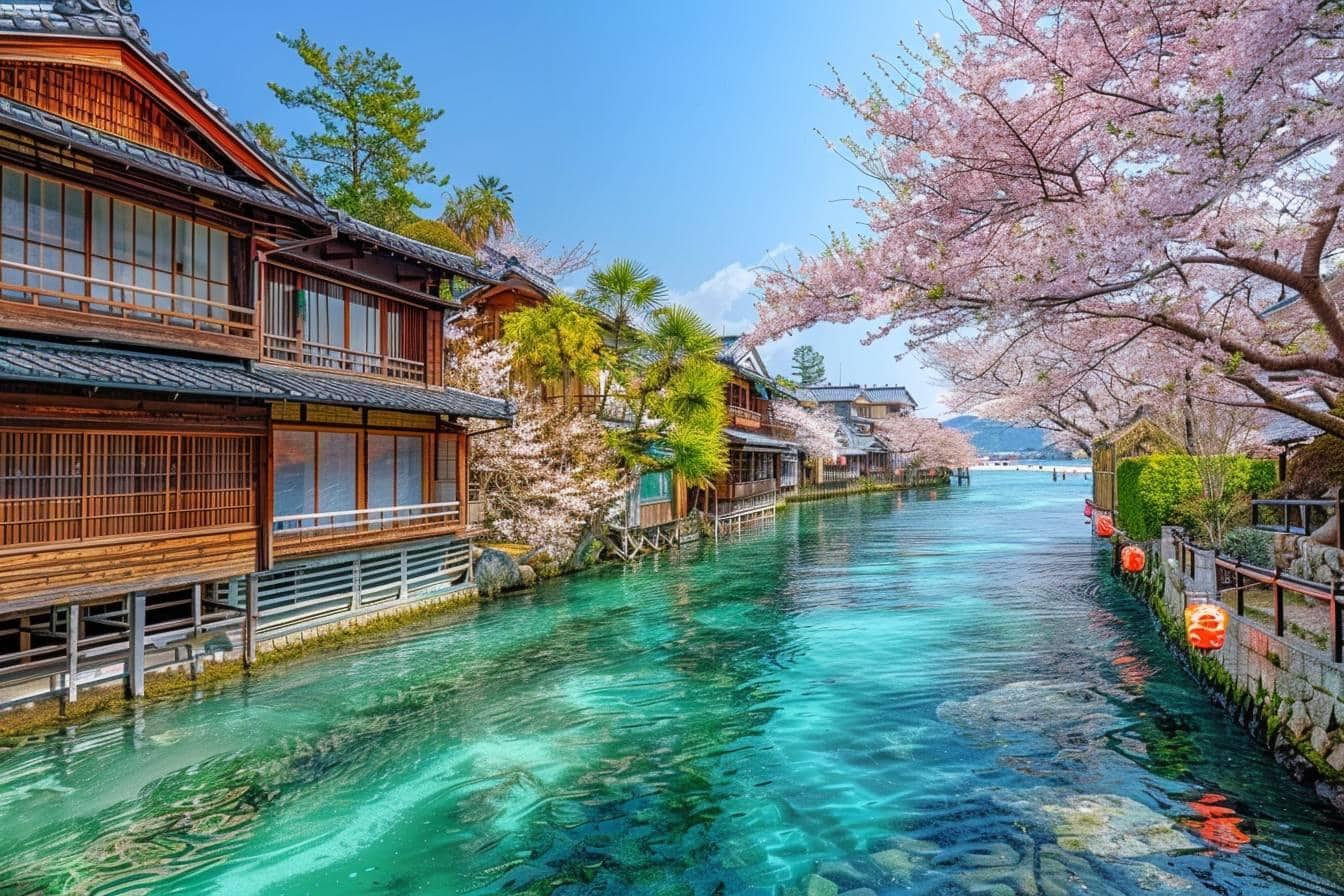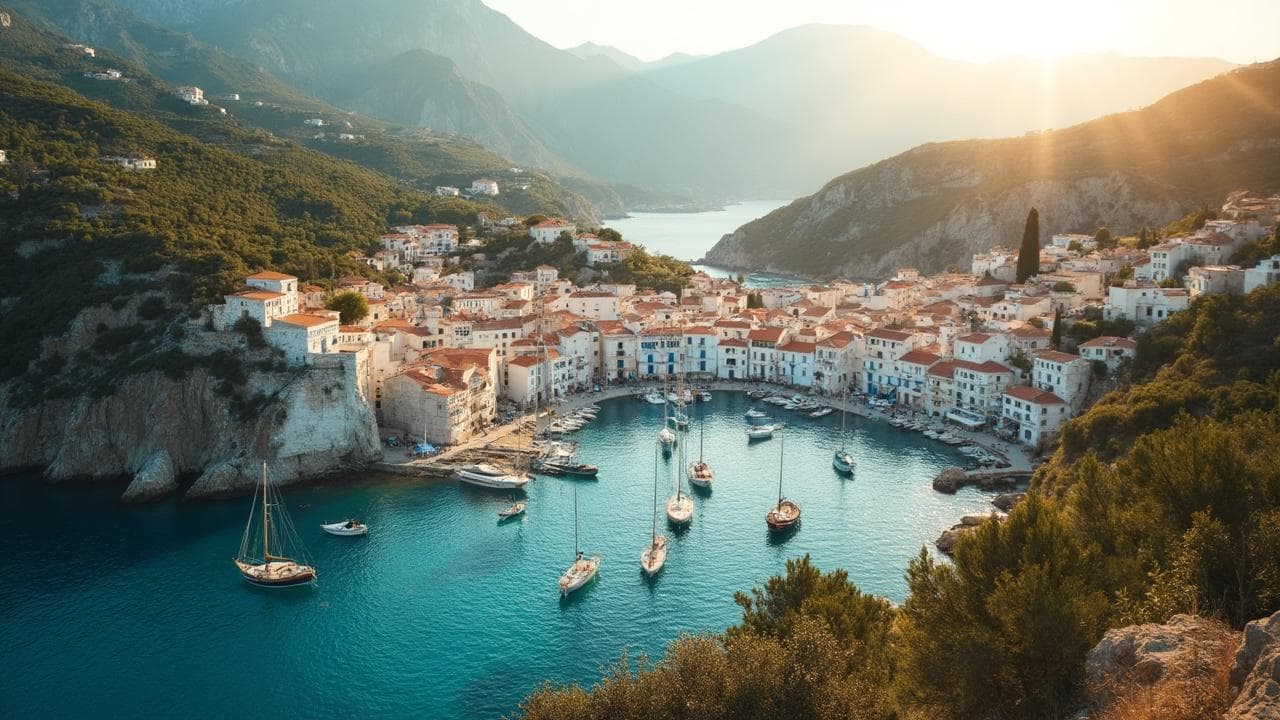Japan, a country that effortlessly blends ancient traditions with futuristic innovations, offers many experiences that cater to every kind of traveler.
The contrast is striking from soaking in the neon-lit exuberance of Tokyo’s Shibuya crossing to the tranquil Kyoto gardens that whisper tales of yore.
I’ve wandered off the beaten path and into the heart of Japan’s cultural tapestry, discovering unique accommodations that are more than just a place to sleep—they’re a cornerstone of the adventure.
In this article
- Experiencing Koyasan with an overnight temple stay
- A stroll through traditional Japanese houses in Kyoto
- Thrills of ski chalets in the Japanese Alps
- Unwinding in beachfront bungalows in Okinawa
- Delving into the world of capsule hotels for budget travelers
Experiencing Koyasan with an overnight temple stay
One of my most profound experiences was spending a night in Koyasan, nestled within Wakayama’s misty mountains. This spiritual retreat, far removed from the robotic din of Tokyo’s streets, offered me an opportunity to step into the shoes of a pilgrim.
Staying in a shukubo (temple lodging), where the mornings are heralded by chanting monks and the evenings are spent pondering life’s mysteries over a vegan kaiseki meal, was transformative.
Here, meditation sessions and walks through centuries-old cemeteries surrounded by cedar trees underscore the simplicity of life.
The palpable sense of peace and tranquility in Koyasan, coupled with the warmth and hospitality of the monks, offers a rare glimpse into Japan’s spiritual lineage. It’s not merely an escape from the mundane but a journey inward, facilitated by the serene environment and age-old rituals that continue to thrive in these sacred halls.
A stroll through traditional Japanese houses in Kyoto
Kyoto, a city that harmonizes the past with the present, houses gems such as the machiya—conventional wooden townhouses that line its narrow streets. Venturing through the historic Gion district, I stumbled upon these architectural wonderlands that have stood the test of time, offering a window into the lifestyle of a bygone era.
Opting to stay in a restored machiya was akin to stepping back in time, surrounded by tatami mats, sliding paper doors, and inner gardens that exude a minimalist beauty.
The tactile experience of the straw tatami underfoot, the subtle aroma of incense, and the soothing sight of a manicured tsuboniwa (courtyard garden) highlight the Japanese aesthetic principle of “wabi-sabi” (the beauty in imperfection).
Living in a machiya immerses oneself in Kyoto’s cultural ethos, where every object and design element tells a story of heritage and craftsmanship.

Thrills of ski chalets in the Japanese Alps
Braving the chill in the air, I headed towards the snowy expanses of the Japanese Alps. I found solace in a cozy ski chalet amidst the powdery heaven enthusiasts dream of. With a backdrop of towering mountains, these chalets are the perfect retreat after a day spent carving slopes.
The fusion of Japanese minimalism with the rustic charm of alpine decor created an ambiance where warmth isn’t just a matter of temperature but a feeling that envelopes you, fueled by crackling fireplaces and the camaraderie of fellow snow seekers.
What intrigued me the most was the seamless blend of comfort and adventure these alpine accommodations offered. Whether I was sipping on hot sake to soothe my muscles or sharing tales of snowy escapades with other guests, the chalet became a crucible of cultural exchange.
The slopes’ adrenaline by day gave way to serene evenings, making each moment in the Japanese Alps an epic memory etched in white.
Unwinding in beachfront bungalows in Okinawa
With its emerald waters and coral reefs, Okinawa contrasted with Japan’s mountainous visage. Deciding to stay in a beachfront bungalow, I was greeted each morning by the gentle lapping of waves and the whisper of the sea breeze.
This island paradise, rich with the legacy of the Ryukyu kingdom, provided a different vantage point of Japan—laidback, sun-kissed, and rhythmically swaying to the ebb and flow of tides.
The bungalow, a fusion of traditional Ryukyuan architecture and tropical aesthetics, offered solitude and beauty in equal measure. Activities like snorkeling, diving, and island-hopping at my doorstep made the days awash with aquatic adventures.
As evenings rolled in, the Okinawan cuisine became the highlight, a melange of flavors that speak of the island’s historical tapestry. Okinawa’s beachfront accommodations are about luxury and experiencing the island’s soul, where history and nature dance in harmony.
Delving into the world of capsule hotels for budget travelers
In my quest for authenticity, I didn’t shy away from the futuristic—enter the capsule hotel. Tucked in the neon heart of Tokyo, this compact marvel was an initiation into the Japanese knack for innovation and efficiency.
Each capsule, a snug cocoon, encapsulated the essence of minimal living. Despite initial reservations, the experience was surprisingly comfortable and emblematic of urban Japan’s pulse.
What fascinated me was the concept and the microcosm it represented—a slice of Tokyo life, where space is a luxury and ingenuity a necessity—the shared amenities, from communal baths to workspaces, foster community.
For a nomad like me, who is perpetually exploring the balance between simplicity and technology, the capsule hotel was a testament to Japan’s futuristic vision, molded by the needs of its bustling urban life.




